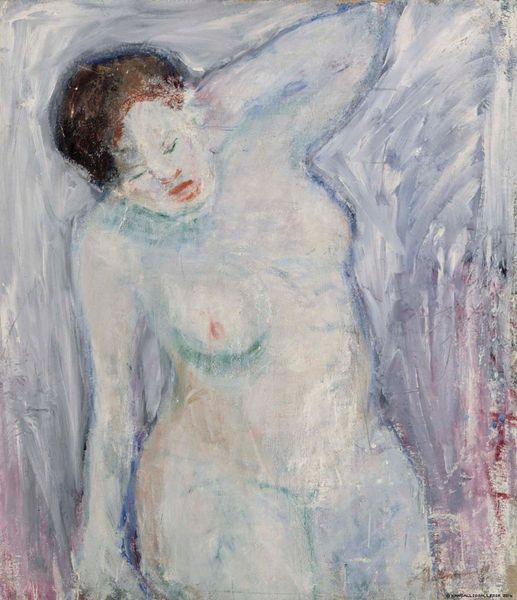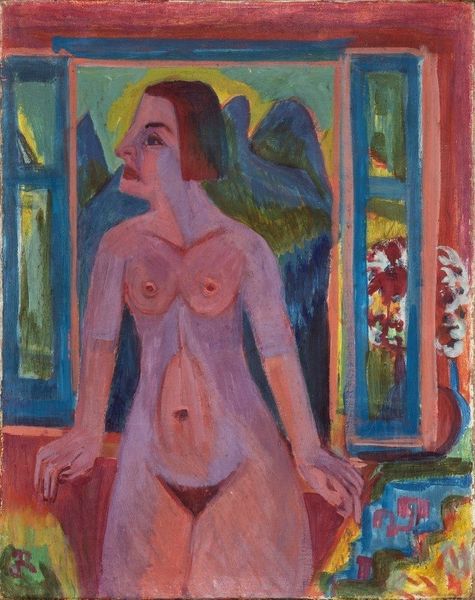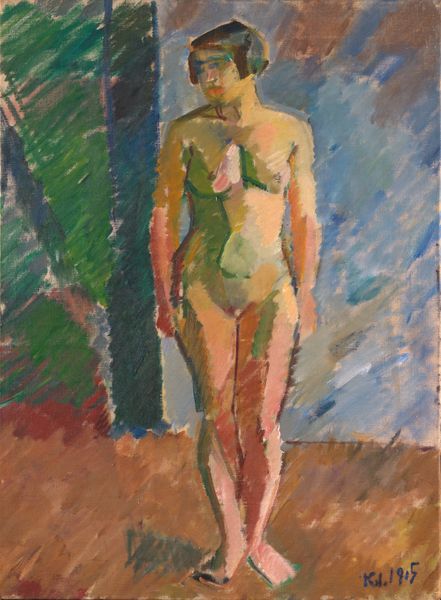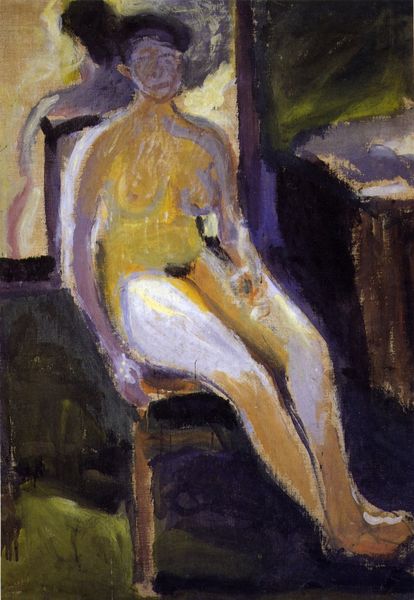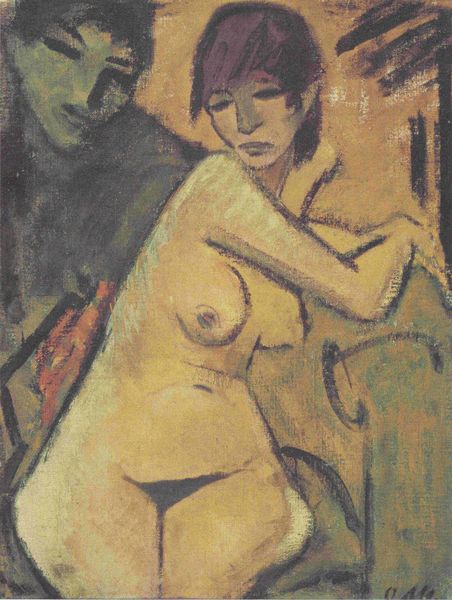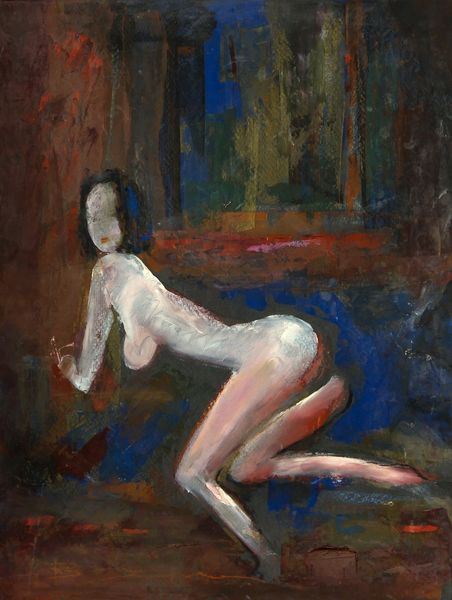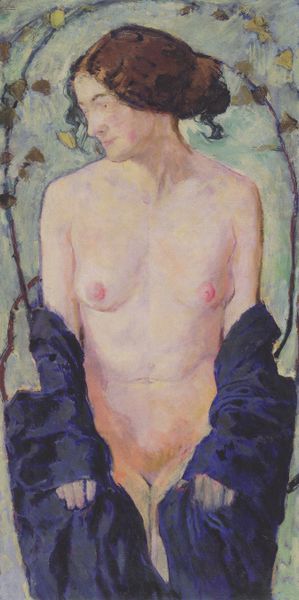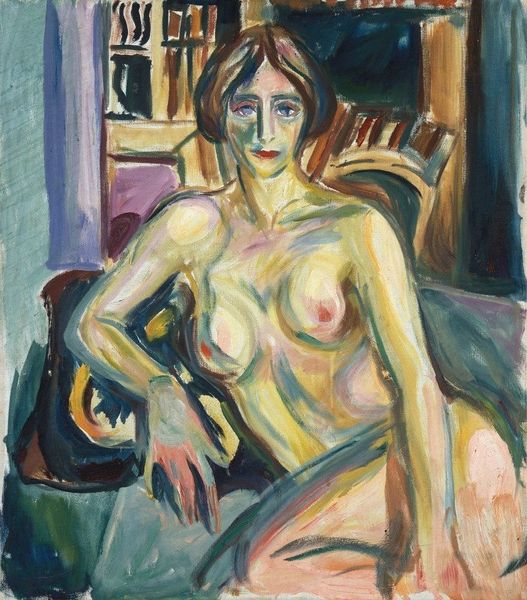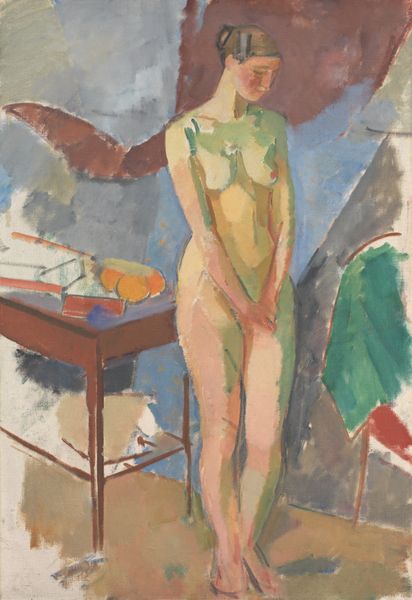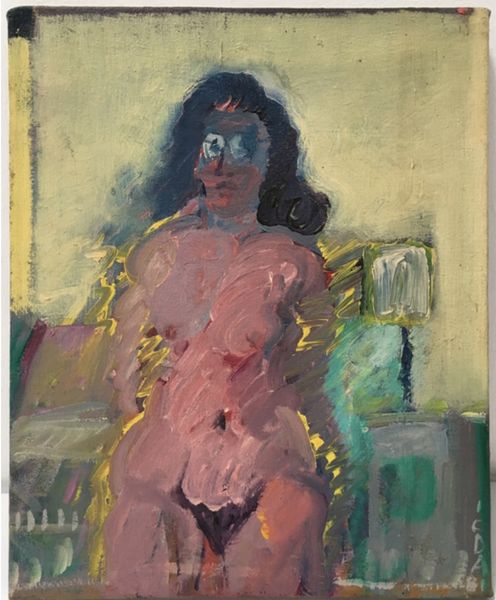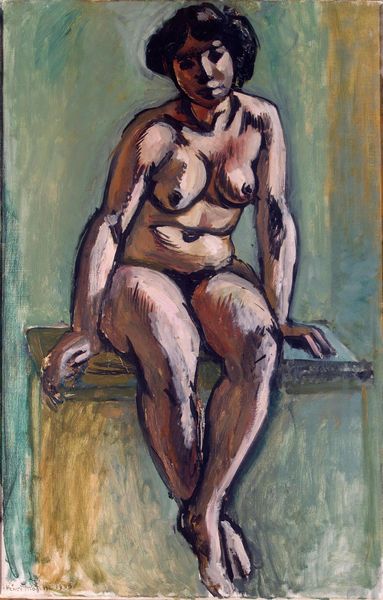
Copyright: Modern Artists: Artvee
Editor: This is Henri Matisse’s "Nu à la serviette blanche," painted around 1901-1903 using oil paint. The vibrant colors definitely stand out, especially juxtaposed with the rather raw, unfinished quality of the brushstrokes. What catches your eye in this work? Curator: The towel isn't just a towel, you know. It’s a shield, a partial veil, but also a flag. It’s about to fall, to expose all; or maybe it will stay, protecting, obscuring, defining the very act of looking. The symbolism around veiling is ancient, across cultures. It provokes and withdraws simultaneously, drawing on deeply ingrained associations with intimacy, revelation, and even the sacred. Editor: That’s an interesting way to look at it. I was so focused on the boldness of the Fauvist colors that I hadn’t considered such symbolic weight. Curator: And yet, consider the palette itself! It dances between impressionism and Fauvism. Before pure abstraction took hold, how else might one represent form and feeling but with color? See the model isn't simply depicted. She *emerges* from a chromatic field of energy. It's as though Matisse sought to portray not just the external form but the interior state as well. The colors communicate on an almost primal level, touching emotional cords tied to centuries of symbolism and experience. The orange wall hints at domesticity and the colorful portal as transformation. Editor: So, even a seemingly simple object, like a towel, and even basic colors can hold complex cultural significance. Curator: Absolutely! It encourages us to question what we inherit, visually, emotionally. Editor: I see what you mean! Thanks for opening my eyes to that.
Comments
No comments
Be the first to comment and join the conversation on the ultimate creative platform.
